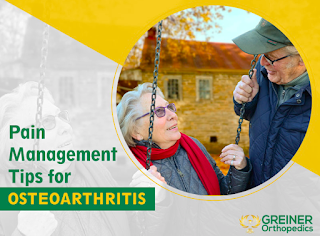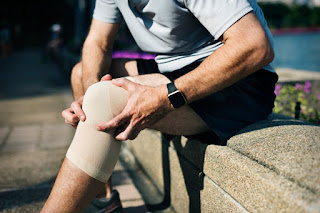
Osteoarthritis is a progressive joint disease characterized by a breakdown of the cartilage between joints. Although osteoarthritis damage can’t be reversed, many patients can help manage the pain and improve joint function by starting with these basic tips.
Get Up and Move
It sounds counterintuitive to exercise through pain, but, according to the Arthritis Foundation, exercise is an effective non-drug treatment for improving osteoarthritis pain and increasing range of movement. However, the right type of exercise is key. Gentle stretching and range-of-motion exercises can help improve joint flexibility, and aerobic exercises can help build stamina, reduce fatigue, and promote weight loss to ease the stress on joints. It’s okay to rest on those high-pain days, but a regular exercise routine can offer many benefits.
Prioritize Sleep
The effects of arthritis are far-reaching and can often lead to depression, sleepless nights, and an overall reduced quality of life. According to the Arthritis Foundation, pain and insomnia feed off one another in osteoarthritis patients. Pain prevents patients from getting quality sleep, and the lack of quality sleep leaves them more vulnerable to daytime pain. The Arthritis Foundation suggests maintaining a regular sleep schedule, removing electronics from the bedroom an hour before bedtime, and sleeping in a cool, dark room for better sleep. If sleep doesn’t come in 20 minutes, they recommend getting out of bed to do a calming activity.
Stock Up on Basics
Over-the-counter pain relievers like Tylenol, Advil, or Aleve can bring some degree of relief from pain and inflammation. These medications aren’t without risks, so patients should speak with their orthopedic doctor to find out which option is best for them, then keep their medicine cabinet stocked. Another medicine cabinet basic is the hot or cold compress. Hot packs can ease pain and stiffness by increasing blood flow, and cold compresses can reduce swelling to bring relief.
Exhaust All the Options
The severity of osteoarthritis symptoms varies from patient to patient, and these basic lifestyle improvements can help many people manage their pain. According to the American College of Rheumatology, most osteoarthritis patients won’t need orthopedic surgery, but severe cases may be relieved by joint replacement. Patients should work with their doctors to exhaust all conservative treatment options before considering surgical alternatives.
If you’ve experienced pain, swelling, stiffness, and decreased joint function, you may be suffering from osteoarthritis. An orthopedic doctor can help you explore treatment methods with the goal of improving your quality of life. Dr. Greiner at Greiner Orthopedics is a board-certified orthopedic surgeon dedicated to helping patients in Greater Kansas City manage their orthopedic conditions. He may be able to help you find relief. Contact Greiner Orthopedics today at 816-317-5070 to schedule an appointment.


